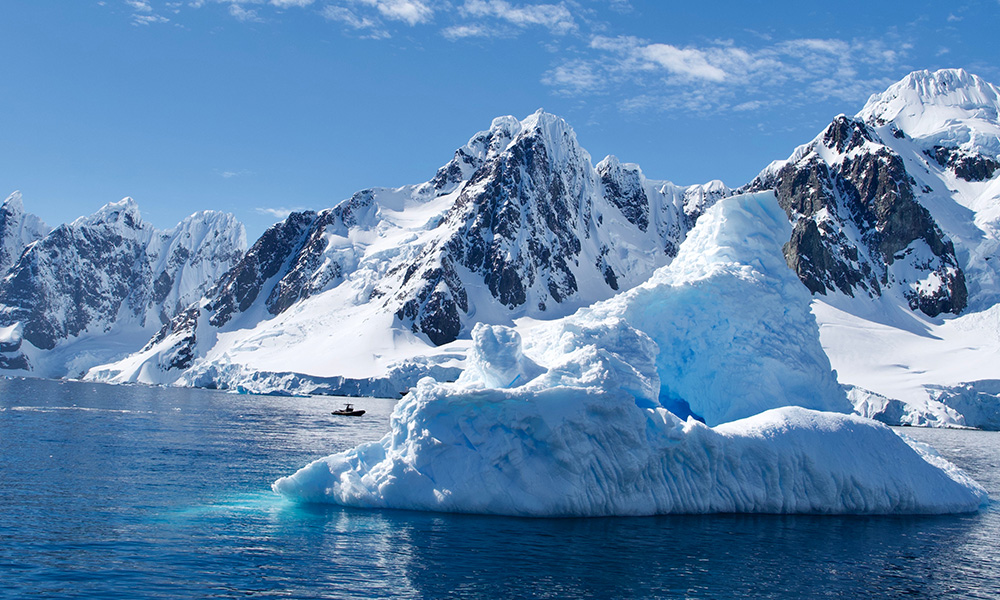2022 was a year of climate extremes, record high temperatures and rising GHG concentrations
The report summarises 2022’s temperatures, greenhouse gas concentrations and significant climate and weather events

Several high temperature records were broken in Europe and across the world, while extreme events such as drought and flooding affected large regions of the world, according to the Copernicus Climate Change Service’s (C3S) 2022 Global Climate Highlights report. The report is based on the ERA5 dataset produced by the European Centre for Medium-Range Weather Forecasts (ECMWF).
C3S is itself implemented by ECMWF on behalf of the European Commission.
According to the report, Europe saw its hottest summer ever recorded, while a number of prolonged and intense heatwaves affected parts of western and northern Europe. C3S noted that ERA5 data concurs with other widely used temperature datasets that European temperatures have increased by more than twice the global average over the past 30 years, and has the highest rate of increase of any continent in the world.
“In our efforts to tackle climate change at global, European or national level, it is clear that high-quality Earth observation data, information and knowledge are essential. C3S provides authoritative and timely monitoring of the changing climate which informs adaptation efforts,” explained Mauro Facchini, Head of Earth Observation at the Directorate General for Defence Industry and Space, European Commission.
Exploring how close the world is to breaching the temperature limits outlined by the 2016 Paris Agreement, the report revealed the annual average temperature was 0.3C above the reference period of 1991-2020, which equates to approximately 1.2C higher than the period 1850-1900, typically used as a proxy for the pre-industrial era. This makes 2022 the eighth year in a row of temperatures more than 1C above the pre-industrial level. Further, each boreal summer month during 2022 was at least the third warmest globally.
In early July 2022, WSP Middle East’s Sophia Kee said, “We have 93% certainty within the next five years of hitting new temperature highs”.

The report highlighted that, during 2022, the world experienced its fifth warmest year on record, according to the C3S ERA5 dataset, but by a very small margin. Other commonly referenced temperature datasets are likely to rank 2022 slightly differently; so far, the hottest years on record globally are 2016, 2020 and 2019 and 2017 respectively, the C3S report said.
“2022 was yet another year of climate extremes across Europe and globally. These events highlight that we are already experiencing the devastating consequences of our warming world. The latest 2022 Climate Highlights from C3S provides clear evidence that avoiding the worst consequences will require society to both urgently reduce carbon emissions and swiftly adapt to the changing climate,” stated Samantha Burgess, Deputy Director, C3S.
For 2022, temperatures were more than 2C above the average of the 1991–2020 reference period over parts of northern central Siberia and along the Antarctic Peninsula. Several regions saw the warmest year on record, according to the ERA5 dataset. Over land, this included large parts of western Europe, the Middle East, Central Asia and China, New Zealand, northwestern Africa and the Horn of Africa, the report highlighted.
Discussing temperatures tracked in Europe in 2022, the report revealed that temperatures across the year were the second warmest on record. It added that while 2022 was cooler than 2020 by 0.3C, it was marginally warmer by around 0.1C compared to 2019, 2015 and 2014. It said that with the exception of Iceland, Europe as a whole saw annual temperatures above the 1991-2020 average.
Temperatures were most above average in the western part of the continent. According to the C3S ERA5 dataset, several countries in western and southern Europe saw the highest annual temperatures since at least 1950. Similar findings have already been reported based on either preliminary or final data by national agencies in this region, the report pointed out.
In early September 2022, a youth movement called for global leaders to take “urgent and bold climate adaption action”.

The report said that summer in Europe was the warmest on record by a clear margin, following the previous warmest summer in 2021. In addition, Autumn was the third warmest on record, only surpassed by 2020 and 2006. Winter temperatures in 2022 were found to be 1C above average, ranking amongst the ten warmest winters. In contrast, spring temperatures for Europe – as a whole – were just below the average of the 1991-2020 reference period.
With regards to monthly averages, nine months were above average, while three – March, April and September – were found to be below average. The continent experienced its second warmest June ever, recorded at about 1.6C above average, and its warmest October recorded with temperatures nearly 2C above average.
Documenting extreme weather events in 2022, the report stated that both polar regions saw episodes of record temperatures during 2022. The Antarctic experienced an intense warm period with temperatures well above average in March 2022. At Vostok station, in the interior of East Antarctica, for example, the reported temperature reached -17.7C – the warmest ever measured in its 65-year record.
During September, temperatures over the centre of Greenland were 8C higher than average, with C3S data showing that almost the whole country experienced average temperatures higher than any in September since at least 1979. This was said to be associated with southerly prevailing winds that were warmer than normal.
The Antarctic saw unusually low sea ice conditions throughout the year, with six months seeing record or near-record low Antarctic Sea ice extents for the corresponding month, the report said. During the second half of February, Antarctic daily sea ice extent reached a new record low, bypassing the previous minimum reached in 2017. The low sea ice extents came primarily from below-average sea ice conditions in the Weddell Sea throughout most of the year, in the Ross and Amundsen Seas until April, and in the Bellingshausen Sea from April onward, the report explained.
In late September 2022, the World Bank committed $2bn in aid for Pakistan reconstruction and rehabilitation efforts.

Shifting focus to the tropical and subtropical regions, the report stated that extremely high pre-monsoon temperatures in Pakistan and northern India resulted in prolonged spring heatwave conditions, and record-breaking maximum and minimum temperatures. Central and eastern China experienced long-lived heatwave conditions with subsequent drought during the summer, it added.
In July and August, the report highlighted that Pakistan saw record-breaking rainfall, which ultimately led to large-scale flooding over large parts of the country, causing widespread destruction and loss of life.
Australia was also found to have experienced below average temperatures, with unusually wet conditions throughout much of the year, especially in the east of the continent, with several episodes of widespread flooding. The report explained that this situation typically associated with persisting La Niña conditions and likely accentuated by saturated soils.
The unusual warmth in late spring and summer in Europe combined with a lack of rain, clear skies and dry soils, brought drought conditions especially to the southern and central parts of the continent. Many countries on the continent reported impacts on agriculture, river transport and energy management. Extremely dry conditions also led to increased fire danger resulting in unusually high fire activity in southwestern Europe, especially France and Spain, it stated.
In-conjunction with the Copernicus Atmosphere Monitoring Service (CAMS), C3S cautioned that atmospheric greenhouse gases continued to increase in 2022. As per an initial analysis of satellite data averaged over the whole atmospheric column, carbon dioxide concentrations rose by approximately 2.1ppm, while methane rose by around 12ppb.
In late October 2022, the UNEP cautioned that the lack of progress leaves the world hurtling towards a temperature rise far above the Paris Agreement goal.

This is said to have resulted in an annual average for 2022 of approximately 417ppm for carbon dioxide and 1894ppb for methane. This is the highest concentrations from the satellite record, and by including other records, the highest levels for over two million years for carbon dioxide and over 800,000 years for methane, CS3 warned.
Annual global total emissions from vegetation fires continue to decline in relation to land use changes and declining savanna fires in the tropics. However, scientists from CAMS monitored significantly increased fire emissions in some regions of Europe where hotter and drier conditions contributed to increased flammability and fire danger.
Due to this, the total estimated summer (June-August) emissions from wildfires in the EU and United Kingdom were the highest since 2007. France, Spain, Germany, and Slovenia experienced their highest summer wildfire emissions for at least the last 20 years, contributing to degraded air quality, the report outlined.
Vincent-Henri Peuch, Director of the Copernicus Atmosphere Monitoring Service remarked, “GHGs including carbon dioxide and methane, are the main drivers of climate change and we can see from our monitoring activities that atmospheric concentrations are continuing to rise with no signs of slowing.”
He concluded, “Concentration changes are the result of both human and natural factors. Our ongoing efforts towards an operational verification support capacity of CO2 and CH4 emissions will provide immensely useful tools to assess more specifically the effectiveness of climate change mitigation measures.”
In mid November 2022, EARTHDAY.ORG unveiled the Climate Education Coalition at COP27.





